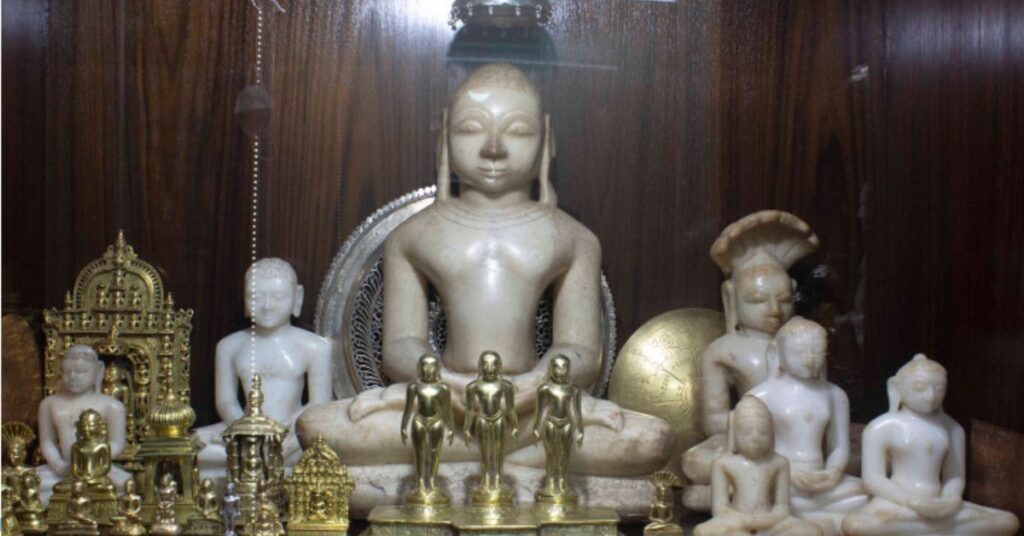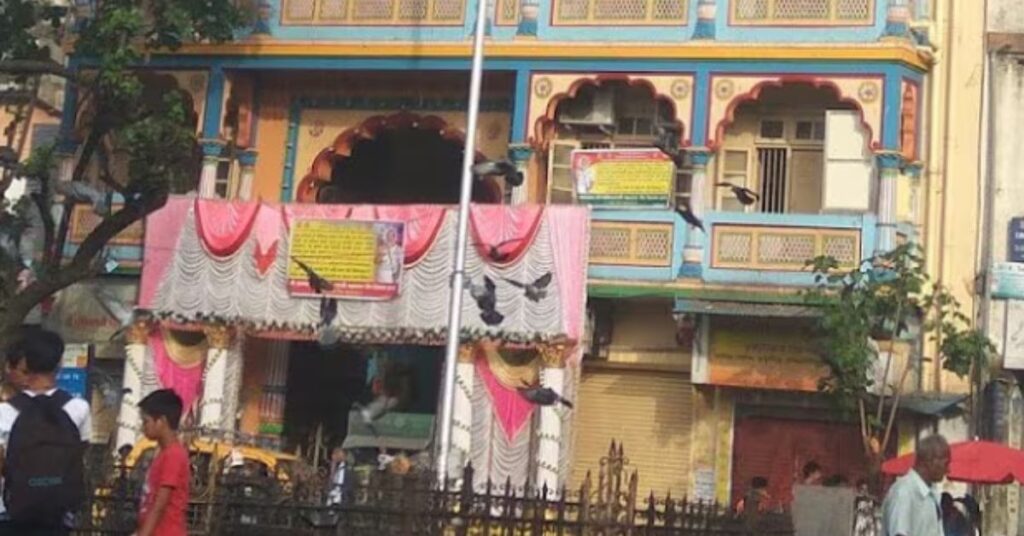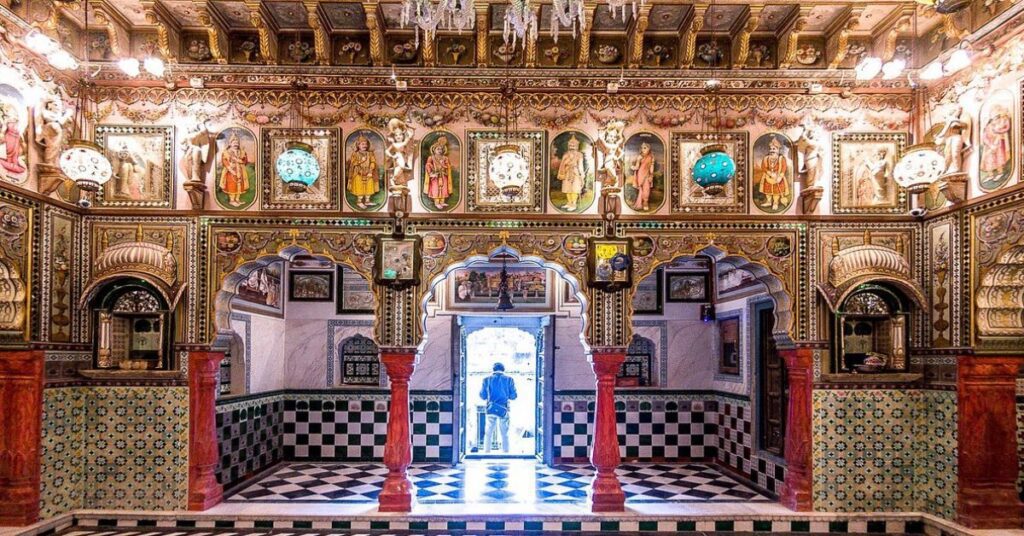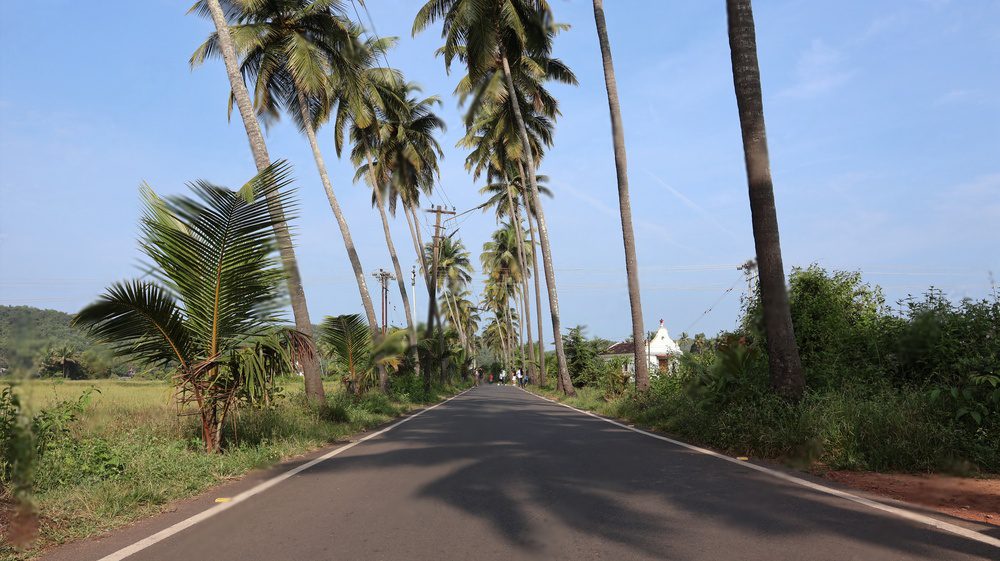Nestled in the quiet beauty of Dadra and Nagar Haveli, the Shantinath Jain Temple is a special place. It’s famous for its beautiful design and peaceful atmosphere. Dedicated to Lord Shantinath, it’s important to Jain people.
The temple is full of amazing details and carvings, and it feels very calm inside. It’s a place where people come to pray and find peace. The temple is surrounded by a peaceful environment, perfect for relaxing and thinking.
Let’s explore this beautiful temple together and learn more about its history and importance.
How to reach:
- By Air: The nearest airport is in Mumbai, about 165 kilometers away. Take a taxi or train from there to Dadra and Nagar Haveli.
- By Train: Vapi railway station is closest, around 25 kilometers away. Take a taxi or local bus from there.
- By Car: Drive from Mumbai via National Highway 48 (NH48) to Vapi, then follow local directions.
- By Bus: Take a bus to Vapi from major cities and then use local transport.
- Local Transport: Taxis and auto-rickshaws are available in Vapi to take you to the temple.
Best time to visit:
Winter (October to March): Enjoy pleasant weather, perfect for exploring the temple. This period often hosts Jain festivals.
Monsoon (June to September): Experience lush greenery but be prepared for rain and potential disruptions.
Summer (April to June): The heat can be intense, so plan your visit for early morning or late afternoon.
Attractions:
Architectural Splendor:


The Shantinath Jain Temple is a stunning example of beautiful architecture. The temple is covered in amazing carvings of gods and other symbols. The walls and pillars are full of detailed designs that tell stories about the Jain religion. The sunlight shining on the carvings creates a magical effect. It’s clear that a lot of skill and care went into building this temple. It’s not just a place of worship, but also a work of art.
Main Deity – Lord Shantinath:


At the center of the temple is a beautiful statue of Lord Shantinath. He is very important in Jainism. The statue is peaceful and makes you feel calm. It’s made with amazing skill and shows how much respect people have for their religion. Many people come to the temple to pray and feel closer to Lord Shantinath.
Cultural and Religious Events:


The Shantinath Jain Temple comes alive during special events and festivals. These celebrations bring the community together and offer visitors a unique glimpse into Jain traditions. From colorful processions to meaningful rituals, these events make the temple even more special. It’s a great way to learn about Jain culture and experience the temple’s vibrant spirit.
Local Experiences:
Participate in rituals: Join in traditional Jain prayers and ceremonies.
Explore the temple complex: Discover its beautiful courtyards and gardens.
Celebrate festivals: Experience the vibrant atmosphere during Jain festivals.
Find inner peace: Meditate in the temple’s serene surroundings.
Connect with devotees: Learn about Jain beliefs and traditions.
Expand your knowledge: Explore Jain philosophy and history through available resources.
Savor local flavors: Enjoy Jain cuisine at nearby eateries.
Discover local crafts: Explore markets for Jain handicrafts and souvenirs.
Experience local life: Attend community events and gatherings.
Capture the beauty: Take photos or admire the temple’s art and architecture.
Give back: Participate in volunteer activities to support the temple.
Relax and rejuvenate: Enjoy the peaceful garden surroundings.
Travel tips:
Dress respectfully: Wear modest clothing and remove shoes before entering.
Check temple hours: Plan your visit accordingly.
Respectful behavior: Maintain silence and avoid disruptive behavior.
Carry cash: Many places may not accept cards.
Stay hydrated: Bring water, especially in hot weather.
Use navigation: Use GPS or a map for directions.
Avoid crowds: Visit during off-peak times.
Respect local customs: Learn about local traditions and practices.
Arrange transportation: Check local transport options.
Check photography rules: Ask for permission before taking photos.
Stay safe: Be aware of your surroundings and protect your belongings.
Consider a guide: Hire a local guide for a deeper understanding of the temple.
Conclusion
Discover the serene beauty and spiritual significance of the Shantinath Jain Temple in Dadra and Nagar Haveli. This architectural marvel invites visitors to immerse themselves in Jain culture and traditions. From exploring intricate carvings to experiencing peaceful moments of reflection, the temple offers a unique and enriching experience. To plan your visit and uncover more hidden gems, explore our comprehensive guide on Xplro.com.
FAQs
What is the significance of Shantinath Jain Temple?
- Shantinath Jain Temple is dedicated to Lord Shantinath, the 16th Tirthankara in Jainism. It serves as an important pilgrimage site for Jain followers, renowned for its detailed architectural design and serene environment that reflect the spiritual and cultural heritage of Jainism.
What are the temple’s visiting hours?
- The Shantinath Jain Temple usually opens early in the morning and closes in the evening. To get the most accurate visiting hours, it is best to check with the temple directly or look for updated information online.
Is there an entry fee for the temple?
- There is typically no entry fee for Shantinath Jain Temple. However, visitors are encouraged to make voluntary donations to support the temple’s upkeep and activities.
What should I wear when visiting the temple?
- It is important to dress modestly, covering your shoulders and legs. Traditional or conservative attire is preferred to show respect for the sacredness of the temple.
Are there restrictions on taking photographs inside the temple?
- Photography is often restricted inside the Shantinath Jain Temple’s inner sanctum. Always check for signage or ask the temple staff for permission before taking any photographs.
Can visitors participate in temple rituals?
- Visitors are usually welcome to observe and, in some cases, participate in temple rituals. It’s a good idea to consult with temple staff to understand how you might be able to join in.
Where can I find accommodation near the temple?
- There are various lodging options available in nearby towns such as Vapi and Silvassa. It’s advisable to book accommodations ahead of time, particularly during peak seasons or festival times.
How do I get to Shantinath Jain Temple?
- The temple can be reached by road from nearby cities like Vapi or Silvassa. You can use local taxis, buses, or private vehicles. The closest railway station is Vapi, and the nearest major airport is in Mumbai.
Are there dining options available near the temple?
- Yes, there are several local eateries and restaurants nearby that offer vegetarian food, which is suitable for those observing Jain dietary practices.
When is the ideal time to visit the Shantinath Jain Temple?
- The best time to visit the Shantinath Jain Temple is during the cooler months from October to March. Visiting during Jain festivals can also provide a more vibrant and engaging experience.
Is the temple accessible for people with disabilities?
- Accessibility features may vary. It’s recommended to contact the temple in advance to check if facilities such as ramps or other accommodations are available for visitors with disabilities.
What customs should I follow while visiting the temple?
- It’s customary to remove your shoes before entering the Shantinath Jain Temple, maintain a respectful silence, and avoid any behavior that might be considered disrespectful. Familiarizing yourself with these practices will ensure a respectful visit.








